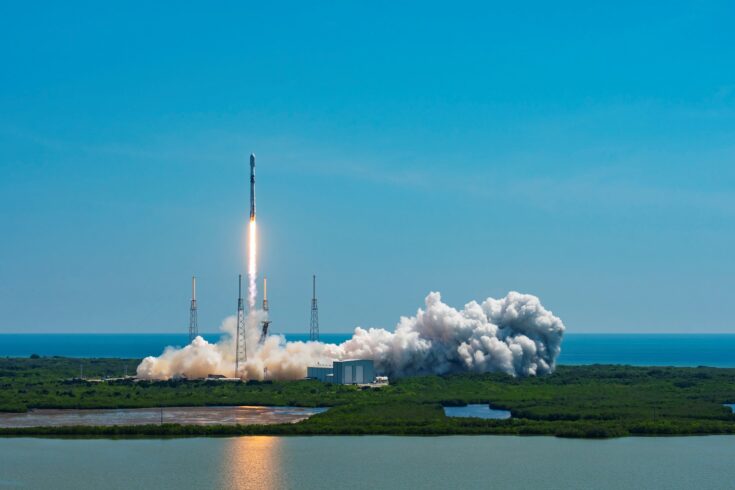Setting out on its mission to study how gravity, dark energy and dark matter shaped the evolution of the Universe.
Alongside a £37 million investment from the UK Space Agency (UKSA), the Science and Technology Facilities Council (STFC):
- contributed to design and development work on Euclid instrumentation
- played a key role in funding UK astronomy teams who will be analysing the data coming from the mission
Biggest questions in science
Executive Chair at STFC Professor Mark Thomson said:
Euclid will answer some of the biggest and most profound questions we have about the Universe and dark energy. Congratulations to everyone involved in the design, construction and launch of Euclid – we are opening a new window on the cosmos.
This is a fantastic example of close collaboration between scientists, engineers, technicians, and astronomers across Europe working together to tackle some of the biggest questions in science.

Euclid spacecraft. Credit: European Space Agency
Mapping the Universe
This is just the start of Euclid’s journey of a million miles from Earth where it will join the James Webb Space Telescope in orbit at L2.
Once operational, Euclid will create a 3D map of the Universe, with the third dimension representing time. By observing billions of galaxies, scientists will be able to chart the position and velocity of galaxies over immense distances and trace the way the Universe has expanded over time.
This data will help astronomers understand how the Universe expanded and evolved throughout cosmic history. Revealing more about the role of gravity and the nature of dark energy and dark matter.
Breakthrough in cosmic science
Lead of the Euclid UK Science Ground Segment and Lead of the Euclid Gravitational Lensing Data Analysis, Professor Andy Taylor at The University of Edinburgh, said:
Once operational Euclid will open the eyes of astronomers to the elemental forces that shaped the Universe. This mission will help us understand dark matter and dark energy and therefore truly understand the nature of the Universe itself, and represents a real breakthrough in cosmic science.
Inspiring mission
Led by the European Space Agency and a consortium of 2,000 scientists across 16 countries, Euclid will spend six years venturing through space with two scientific instruments:
- a UK-built visible imager that will become one of the largest cameras ever sent into space
- a near infrared spectrometer and photometer, developed in France
Chief Executive of the UK Space Agency, Dr Paul Bate, said:
Watching the launch of Euclid, I feel inspired by the years of hard work from thousands of people that go into space science missions, and the fundamental importance of discovery – how we set out to understand and explore the Universe.
The UK Space Agency’s £37 million investment in Euclid has supported world-class science on this journey, from the development of the ground segment to the build of the crucial visible imager instrument, which will help humanity begin to uncover the mysteries of dark matter and dark energy.
The wider Euclid Consortium includes experts from 300 organisations across thirteen European countries, the US, Canada and Japan.
Top image: Credit: European Space Agency

